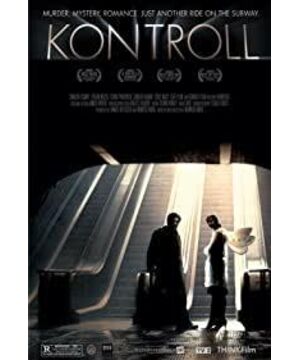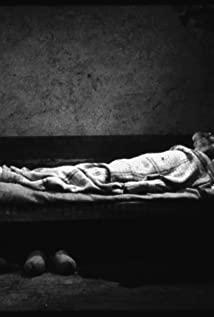From beginning to end, the film was shot underground, and everything revolves around the background of the Budapest subway system, which never sees the light of day. The inspectors at those subway stations were downright proletarians, sloppy dressed, poorly educated, and simple. Their job is to check tickets or maintain law and order. They are also dealing with some proletarians. They all refuse to buy tickets, some refuse with pure violence, and some hope to pay with the prostitutes around them. . . Fighting against these people who refuse to buy tickets is a product of the capitalist system, but these ticket inspectors also feel that they are class brothers, so fighting with these people has become an important part of enriching their lives.
I saw a suffocating movie "House of Nine" a month ago. Everything happened in a secret room mansion with no sunlight and only lights, but "Subway Style Painting" describes the oppression of the proletariat and seeps out to some extent. Some positive romanticism: you can have an onion in a car at midnight, you can be chased by the subway on the rails, or you can attend a crazy proletarian masquerade at a subway station, all of which make this dark The underground society does not seem so desperate.
Since it is a Hungarian film, it will always subvert the Hollywood template that has been deeply rooted in some aspects of the film. The biggest touch to me is its promotion of the plot. In the vast majority of movies, you know what the protagonist of the movie is going to do, or give you a very clear main line, which is the rule Hollywood has set for us. But "Subway Style Painting" makes you unable to see this main line. The protagonist of the scrutineer urges people to buy tickets during the day, sleeps in the subway station at night, and wakes up during the day is a day with the same process, just like "Yiyi" A boring repetition with no end in sight. But every day there is a new excitement or fun. This fun keeps them from breaking down in this dark underground, and it also prevents the audience from falling asleep while watching. It seems like a collection of short stories composed of funny or romantic or philosophical stories, but the transition and connection of these stories are not abrupt at all, but step by step push the film to an unknown climax.
This section from the climax to the end also leaves room for the audience to think. The masked man who pushed the passengers off the tracks didn't show his face until the end. No one had seen the murderer except the protagonist Bulcsu, who also left the underground hand in hand with the beloved Teddy girl at the end of the movie. Maybe too much poisoned by Hollywood, I couldn't help but think about whether Bulcsu-kun is a split personality, maybe the dark days of the day and the neurasthenia of many nights suppress him, so, hum. . . Otherwise, if Bulcsu got out of the subway because he defeated this old enemy, it is too far-fetched Hollywood model, (besides, Bulcsu only discovered the murderer after the masked man killed Bootie, so it is difficult to say that he is the old enemy), if it is interpreted as Bulcsu finally overcomes his other personality, so he untangles the lingering depression that haunts his mind, and "Subway Style Painting" will appear more romantic and fuller.
Norris, 2005-07-25
View more about Control reviews









